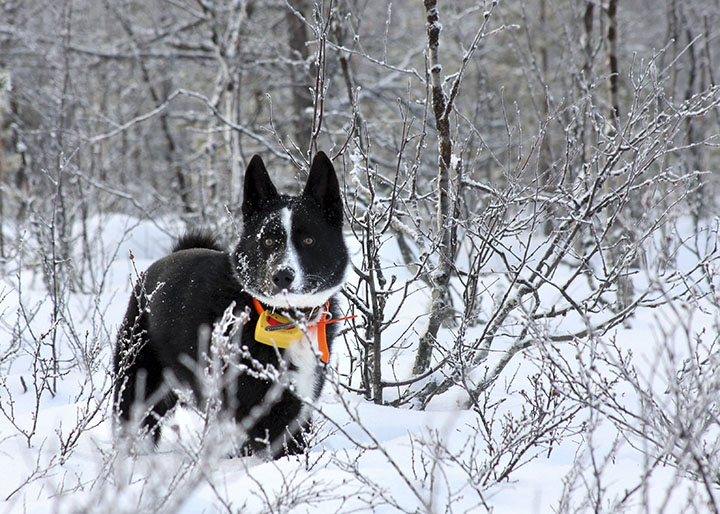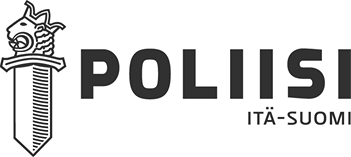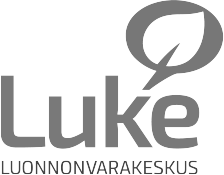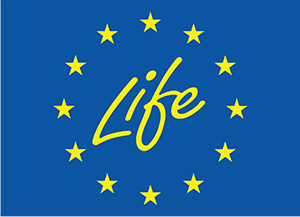The project conveys information about the biology of wolves and the prevention of losses caused by wolves. The project also develops practical means to prevent losses, such as ways to protect hunting dogs. In addition, the project provides help for animal farms to protect domestic animals.
Every year, wolves kill and injure domestic and production animals in Finland. There are approximately 40 to 50 attacks by wolves targeting dogs annually. These, regrettably, often lead to deaths. Some 100 sheep deaths caused by wolves are registered every year. On average EUR 600 000 has been paid annually in compensation for injuries caused to reindeer. Cattle farms also incur losses every year, and wolves have also targeted fur farms in recent years.
Developing the prevention of losses is important to improve the coexistence of people and wolves. The LIFE BOREALWOLF project will develop tools for the prevention of losses of dogs and domestic animals and share know-how regarding the protection of animals. Well-functioning protective methods include erecting and maintaining fences properly, allowing animals to stay indoors in a particular shelter overnight and using wolf scaring device on farms.
However, if losses take place, it is important that a well-functioning compensation system is in place. Currently, losses of dogs and production animals are compensated in full, and a separate category has been set up for compensating losses of reindeer.
The prevention of losses calls for knowledge and practical tools
The project will provide studied and tested information about wolves for animal owners and local people. Knowing what kind of animal a wolf is, where it moves and how it behaves helps to face wolf-related challenges. Knowledge may also reduce fears and concerns. Project planners will cooperate with different parties and help people living in wolf regions to cope with wolves.
Owners of domestic and production animals and people who hunt with dogs already have access to various means to prevent losses. It is important that information about protection and useful practices is made available to everyone. During the project, domestic animal farmers will be interviewed and best practices will be collected, also from outside Finland. In addition, new methods will be developed for the prevention of losses. Information about wolves and the prevention of losses will be distributed, for example, at public events and during visits to farms.
Fences and repellents can be used to protect domestic animals. Traditionally, fences are built on farms where the value of protected animals is higher than the value of the fence material. The project will chart animal farms in risky areas and prepare preventive plans for them. Any animal farms in need of acute protection will be rapidly provided with electric fences.
The project will also test new ways to banish wolves from built environments, for example, using sounds or light.
New methods to prevent losses of dogs
Protective equipment for dogs will be developed and tested separately. The development of effective protective methods will reduce the risk of dogs getting injured when attacked by wolves, which, in turn, will improve the acceptance of wolves among hunters and the greater public. Specialists in the field will be involved in development. Seminars will be held for product developers and entrepreneurs interested in preventing losses of dogs.
In wolf regions, hunters already possess know-how of the prevention of losses. This know-how should be distributed to more recent wolf territories where people do not have much experience in how to live with wolves. Being aware of the presence of wolves in hunting regions, especially when the land is covered by snow, is one of the easiest ways to prevent losses of dogs. Sharing information about the movement of wolves among local people is a significant method of protection. Planners will implement best practices by offering and sharing information.

© Vastavalo / Jani Seppänen
Contact details of project planners
Project planners can be contacted in wolf-related matters and especially in the prevention of losses. In acute situations, when losses have already occurred or when the risk of losses is high, the project planners should be contacted urgently.
Mari Tikkunen
Finnish Wildlife Agency Kainuu
mari.tikkunen@riista.fi
+358 29 431 2239
Jenni Pirinen
Finnish Wildlife Agency Northern Savonia
jenni.pirinen@riista.fi
+358 29 431 2307
Mikko Jokinen
Finnish Wildlife Agency Satakunta
mikko.jokinen@riista.fi
+358 29 431 2324
Schedule and outcomes
The project planners will meet people living in wolf regions and cooperate with them throughout the project.
In 2020, a kick-off seminar for the protection of dogs will be held. The first risk assessments will be carried out for domestic animal farms, the first farm-specific protection plans will be prepared and the first protective measures will be implemented. Fences will be delivered to the domestic animal farms that need them. Studied and tested protective methods will be identified.
During 2021, the testing of new loss prevention methods will begin. A report on the best European loss prevention methods will be published. The second seminar on the prevention of losses of dogs will be held.
During 2022, wolf scaring device will be tested on domestic animal farms.
During 2023, wolf scaring device will be tested on domestic animal farms.
During 2024, a toolkit will be released for preventing losses of domestic and production animals. The testing of new loss prevention methods will be completed.
After the project, proven wolf repellents can be borrowed from regional offices of the Finnish Wildlife Agency.
Cover photo: © Vastavalo / Katri Mäkinen







